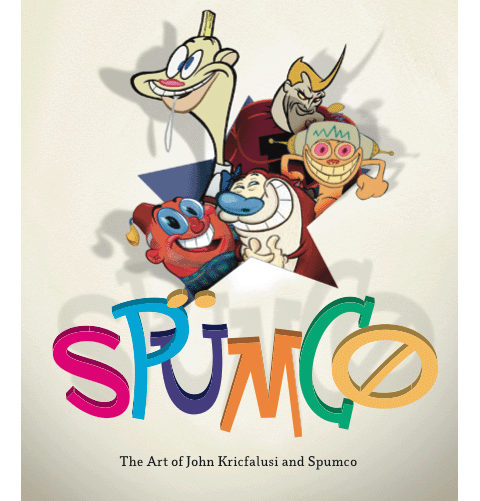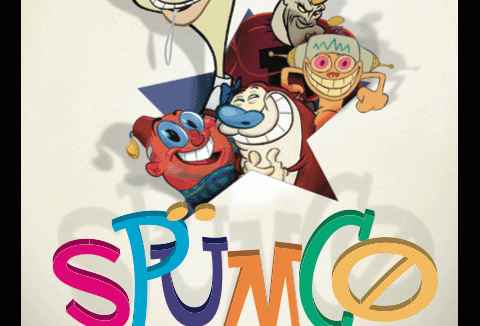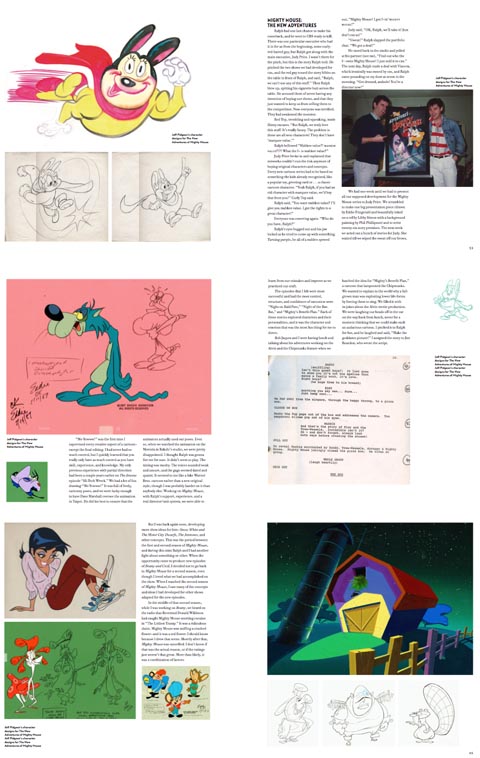

Why There Isn’t a Spumco Coffeetable Book: My Personal Story

I occasionally receive emails asking something along the lines of, “Whatever happened to that John Kricfalusi/Spumco coffeetable book you were working on?” Recently, however, I’ve noticed that there have been some unflattering rumors about my involvement. That’s why I feel it’s time to set the record straight about what happened to the project. I should point out that this is a personal story written from my perspective, and you may get different versions from the other key players involved. My story, however, comes from first-hand involvement in the project and direct conversations with all the main players. To the best of my knowledge, it’s an accurate account of what happened.
I was asked in 2008 by PictureBox to work with John Kricfalusi and serve as the editor for a book celebrating his work and that of the studio he co-founded, Spumco. The publisher Dan Nadel assured me that, “You and John will have complete control over how the book is marketed, packaged, and presented. You know the audience and I know you, so that’s good enough for me.”
I worked closely with John throughout 2009 on the manuscript. I didn’t write a single word of the book, but came up with the book structure and molded the manuscript into shape. For those who aren’t aware, John is a terrific writer. I didn’t have to do much other than nudge him in the right direction. We ended up with an entertaining, educational and fun manuscript that I look at with pride, filled with new information even for those who think they already know all there is to know about the history of Spumco and John Kricfalusi.
During the time I worked on the book, PictureBox ran into financial problems. The reason Dan Nadel told me was due to disappointing sales of a huge two-volume coffeetable book about Gary Panter. As a result, Dan sold the John Kricfalusi book to Abrams ComicArts, a fantastic imprint started by the able Charles Kochman, who is now the executive editor of Abrams. PictureBox remained the book packager, and fundamentally, nothing changed in the production process, except that we gained a bigger publisher with deeper resources.
I was heavily involved on the visual side as well, and sequenced some early versions of the book. Unfortunately, the book began to unravel once it was handed off to the designer Norman Hathaway. It was almost immediately clear that he was a poor match for the book and didn’t understand John’s artwork or the presentation it needed. Dan, however, insisted on keeping Norman onboard because they were personal friends.
I was glad to wrap up my editorial duties and get out of there because I could see the whole project going south. On February 27, 2010, I sent an email to Norman where I expressed concerns that he was harming the book. In it, I wrote:
After multiple meetings about design and your phone discussions with John, I was all but certain that we’d arrived at some sort of a consensus of what John wants the book to look like. John admittedly hasn’t been clear about certain aspects of the design, but he’s been adamant about one issue: the use of white space. Your layout seems to purposely defy him on this essential point which, regardless of its importance to you, is a make-or-break issue for him. There is tons of wasted white space and columns that are filled with nothing or with a tiny piece of art. This process will not go smoothly unless you build and improve upon John’s ideas. John is asking for excitement for the eyes, a “visual blowjob” in his terminology. This current approach is tame, respectful, and completely at odds with what he’s has been asking for from the very beginning of the project.
Here are some of his early layouts that made me do a double-take:

Dan Nadel and Norman Hathaway ignored my advice and pushed onward, dragging John along with them into the mess they were creating. The results were, quite predictably, embarrassing and incompetent. I was told later that Abrams was concerned about the layouts they were receiving, but Dan convinced them that John loved the book and approved of everything.
It wasn’t until some time later that Charlie Kochman learned that John hated the book. John, for his part, wasn’t even fully aware of the deal that Dan had cut with Abrams ComicArts. When the details unraveled, Dan and Norman were removed from the project. To Charlie’s great credit, he took full responsibility for the mess and refused to publish the book in its dilapidated state, even though a lot of money had already been invested and it was nearly done.
The whole experience left me with a bitter taste. In my personal interactions with Dan Nadel, I found him to be untrustworthy (I had to threaten legal action to get paid for my work) and petty (he suggested I remove my parents’ names from the acknowledgments because they couldn’t spare an extra ten words to include them). As for his creative and aesthetic sensibilities, those are opinions that I’ll keep to myself.
I’m pissed that he wasted 18 months of my time, but more importantly, I’m angry that he kept an amazing animation art book from being published. This year was the 20th anniversary of Ren & Stimpy. It was a cause for celebration, and nothing would have been more appropriate than this long overdue volume about John’s contributions to the art form.
The last time I spoke to John about the book was in May, and at the time, he wasn’t interested in picking up the pieces and starting over again. I’ve moved on to other things as well and don’t anticipate being involved in any future coffeetable book about Spumco. Dan Nadel, who is now editing The Comics Journal blog, is pleading ignorance about the entire affair instead of being honest about his role in the book’s demise. In a July 7 posting on his PictureBox blog, when someone asked what happened to the John K book, he wrote, “I don’t have any info on that. Try John K. or Amid Amidi.” And if you try me, I’ll be as transparent as I know how.
One thing is clear: Spumco and John Kricfalusi deserve a worthy tribute. I hope we don’t have to wait until Ren & Stimpy‘s 40th anniversary to see such a book.
